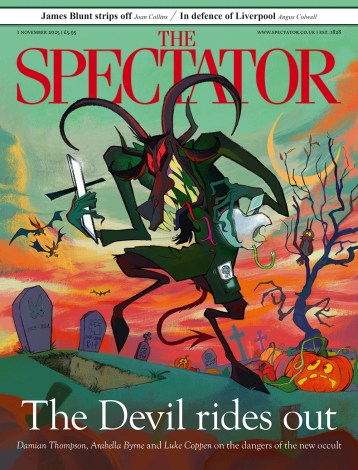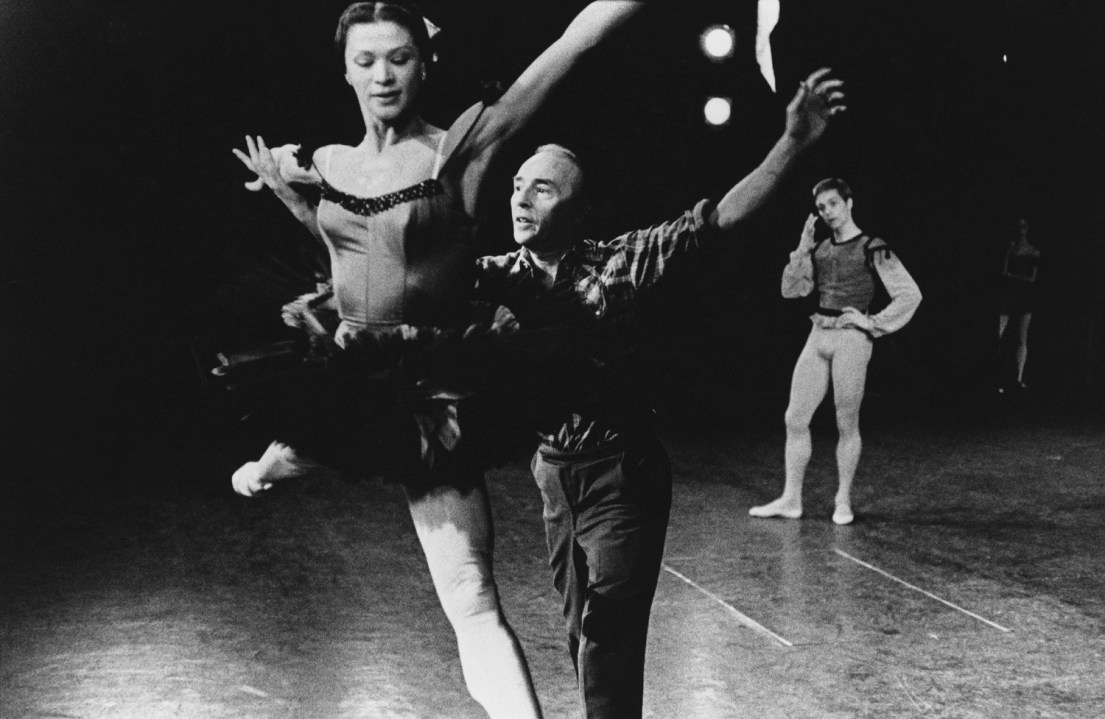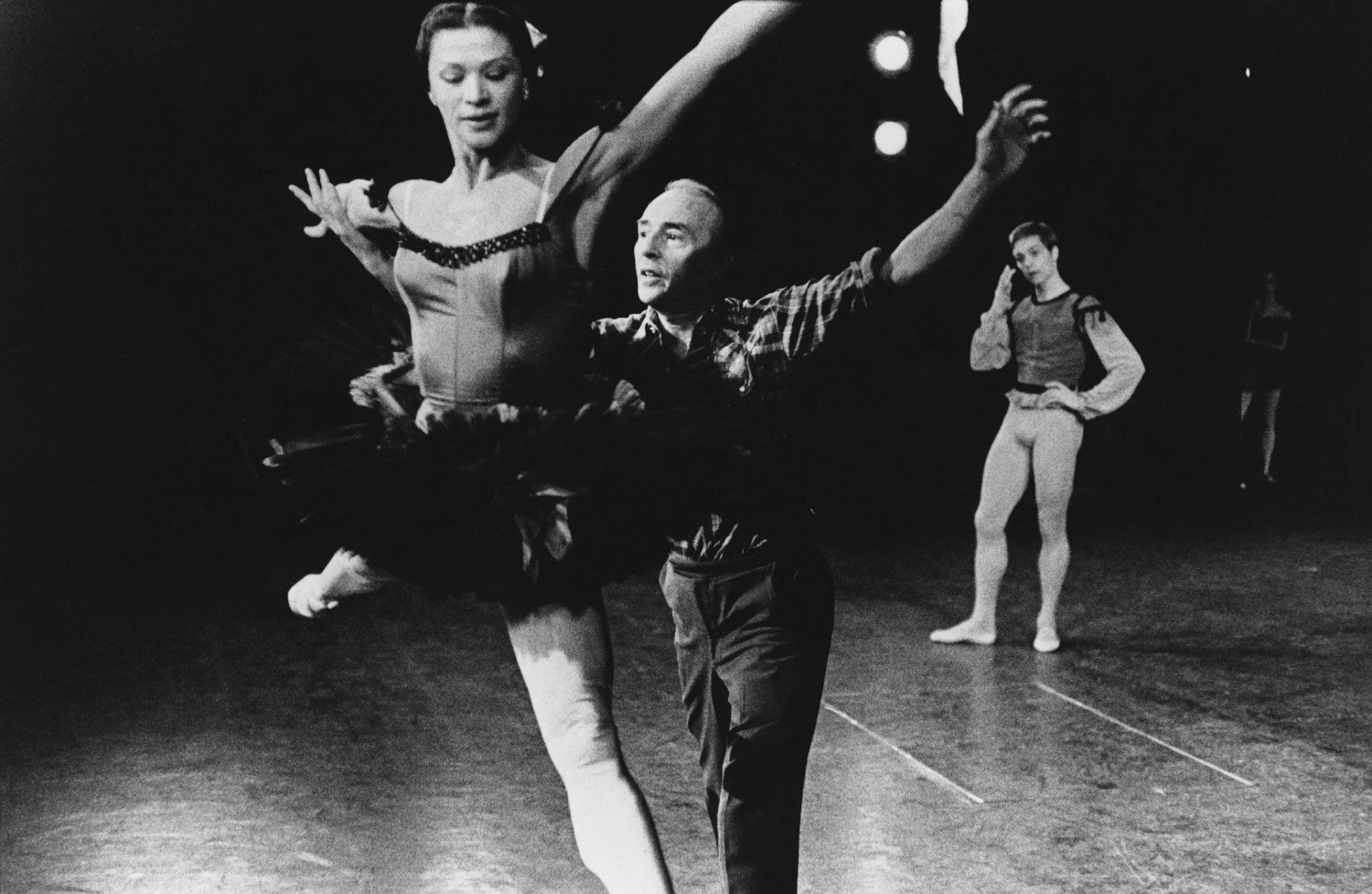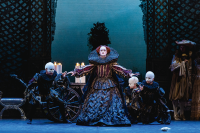Through several phases of the culture wars, ballet has served as a canary in the coal mine, its intense and exposed physicality highlighting all the issues surrounding sexuality, gender and power that have currently become our unhealthily narcissistic preoccupation.
Perhaps the warnings started with the phenomenon of Vaslav Nijinsky. Against the defined masculinity and femininity of the Edwardian era, he stood out as seductively androgynous and effeminate as well as staggeringly charismatic – a godlike hero unashamed to represent le spectre de la rose. Bloomsbury ogled, and rumours about his pederastic relationship with his patron Serge Diaghilev circulated scandalously.
Fonteyn said that if people knew what she endured only those who enjoyed bullfights would applaud
But Diaghilev didn’t much care what people thought, and in 1923 his Ballets Russes commissioned Nijinsky’s distinctly mannish sister Bronislava to choreograph Les Biches, a slyly witty satire of Riviera chic in which silly girls kiss each other suggestively and the central female figure, dressed like a boy, disdains the advances of absurd muscle men and comports herself in non-binary fashion. Homosexuality became advertised rather than concealed: in ballets such as Le Train Bleu and La Chatte, Nijinsky’s successors such as Anton Dolin and Serge Lifar wore costumes that made no attempt to evade bulges of genitals and buttocks, eroticising their bodies as graphically as those of the ballerinas. Sex had become not so much a compulsion as a game of whims and choices.
Aroused by such provocations, a distinctly fruity section of the ballet audience was consolidated, as the tabloid press primly noted: ‘I should enjoy ballet very much,’ harrumphed a columnist in the Evening Standard, ‘if the intervals were not marred (for me) by willowy young men who call each other “darling” and lissom young women who lean against each other in raptures.’ This imputation would dog ballet in Britain for the next 50 years – a man with a taste for men in tights wouldn’t help us win the next war, and anyone who wore them on stage was at best an exotic, at worst a degenerate.
This was paranoia, of course, but it is something perhaps still not fully dispelled, as emerged in the fairy tale of Billy Elliot. In any case, however, the prevalence of an ‘out and proud’ gay ideology is fast making such prejudice irrelevant, and one could put good money on the proposition that the percentage of homosexual men in ballet companies is scarcely higher than it is in any other profession.
What has now transpired, however, is a much graver anxiety less about gender and more about the patriarchy: the exploitation inflicted on voiceless young women in the name of a wordless art.
This is a complex issue framed by the military parade-ground regime that ballet requires and one that can’t be simplistically reduced to sexual assault or the casting couch. The screaming ballet master and martinet ballet mistress thwacking calves with her stick may be caricatures of a defunct type, but for all the cushioning of physiotherapy studios and pastoral safeguarding, ballet is still a ferocious business, almost archaic in its hierarchies and obeisance to traditions.
The pain involved in submission to its codes is to some extent self-inflicted, ingrained from the first day of an arduous training that relentlessly battles with every part of the body. A badge of masochism is pinned to every dancer’s lapel: if it doesn’t hurt, you’re not doing it right. The agony always hits women worse. Seventy-five years ago in The Red Shoes, Moira Shearer was compelled to dance until she dies, and Margot Fonteyn would say that if people knew what she endured on stage, only those who enjoyed bullfights would be applauding. Today, with pressure to stretch to ever greater feats of virtuosity and contortion, toxically combined with an obsessive perfectionism and horror of even a sliver of fatty tissue, the musculoskeletal injuries can be horrific, with anorexia and bulimia attendant occupational hazards.
Such is the pathology endemic before the explosion of #MeToo and Time’s Up in 2017. Its symptoms appear to have flared up in one company worse than any other: New York City Ballet. The first whistleblower was the ballerina Gelsey Kirkland, whose sensational autobiography Dancing on My Grave, published in 1986, flayed her own addictions and neuroses as well as the rough-house ways in which the company’s future director Peter Martins had treated his partner Heather Watts. Martins was subsequently charged with third-degree assault of his wife the ballerina Darci Kistler (the charges were later dropped), and in 2018, amid a rush of further denunciations and an arrest for drunken driving, he finally retired from a directorship he had been allowed to retain for nearly 20 years. An inquiry into his behaviour has never published its findings, but demonised portraits appear in the idiotic but compelling movie melodrama Black Swan and First Position, a new novel by Mick Jagger’s current girlfriend and former NYCB soloist Melanie Hamrick.
The murk has descended further with a book by another NYCB dancer, Georgina Pazcoguin, calling out cheap racism in the field, and the unedifying saga of a group of male NYCB dancers discovered to be conspiring over obscene images and text messages focused on female colleagues (‘sluts’, ‘farm animals’ and ‘girls I’ve made scream and squirt’ give a flavour of the unsavoury language used). The culprits have all now left the company, and a new directorate led by former dancers Jonathan Stafford and Wendy Whelan has been charged with restoring the façade.
But that’s not the end of it. The debate has shifted to NYCB’s founding father (or should one say its God Almighty?), George Balanchine, whose choreography – described by the critic Robert Garis as ‘one of the great things in our lives and one of the great things in the century’– constitutes the heart and soul of the company’s identity and has long commanded a sacrosanct reputation in Manhattan society.
Evidence produced by Jennifer Homans’s new revisionist biography of this towering figure has raised feminist hackles, toppling an idol from his pedestal and exposing him to the critiques of the cancellers or at least the sceptics – Erika Lantz’s podcast The Turning providing them with a lively forum.
‘Before you get your pay you must weigh’, read the company noticeboard
‘Mr B’ may not have been physically abusive or sexually predatory – he rarely lost his temper and was serially monogamous – but he led a cult that demanded absolute loyalty and exerted total control. His dancers were not collaborators but servants. No questions, no argument, rebels instantly dismissed. Babies and boyfriends unwelcome. Diet rigorously restricted – ‘Before you get your pay, you must weigh’, read the company noticeboard. He may have talked harmlessly playful Rabelaisian bawdy, but he was in deadly earnest – a Pygmalion, sculpting bodies to people his visions. He loved women – ‘ballet is woman’ he claimed – but it was women as subjects or objects rather than human individuals that enchanted him: none of his multiple marriages was lastingly successful and he was not comfortable with intimacy outside the theatre. He represents, in other words, a presumption of masculine privilege and prerogative that is no longer deemed acceptable.
Whether this slant on Balanchine’s personality has any permanent traction remains to be seen, but the case for his defence is strong. Like Wagner, like Dickens, like Picasso, the sheer weight of his creative achievement tips the balance heavily in his favour. And the dancers he nurtured regarded themselves as votaries rather than victims, not so much exploited as enriched – and it is hard to think of a work of art more richly and expressively liberating of women’s bodies than Jewels, the masterwork which the Australian Ballet brings to the Royal Opera House next month in celebration of the company’s 60th birthday. Through its three contrasting sections – the lyrically Gallic ‘Emeralds’; the jazzily American and athletic ‘Rubies’; the regally tsarist ‘Diamonds’ – Balanchine offers nothing less than a romantic manifesto of the feminine and the beautiful.
A new book by Alice Robb reflects with jaundiced honesty on these matters: she’s a dancer who didn’t make the grade and her love of ballet is bittersweet. Its title, Don’t Think, Dear, is a reference to Balanchine’s rehearsal-room cry ‘Don’t think, dear, just dance’. He may have intended this as an injunction to trust instinct – and, to be fair, it was applied to male as well as female dancers – but it points to the lingering of patronising and infantilising attitudes that hold back an art form that operates too far from reality ever to quite grow up. Ballet is woman? What Balanchine more precisely meant, perhaps, is that ballet is man’s dream of woman.
The Australian Ballet presents Balanchine’s Jewels at the Royal Opera House, 2-5 August.







Comments